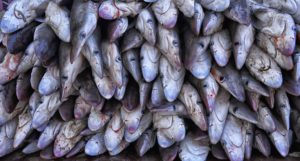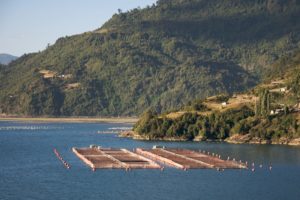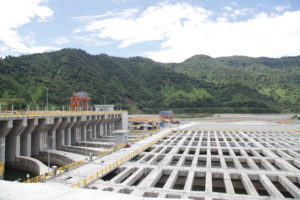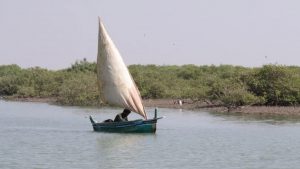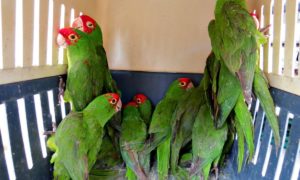Sales of shrimp from Ecuador to China were worth over US$1 billion between January and August this year but were suddenly halted in September for sanitary reasons, casting uncertainty over the trade.
Almost a month after Chinese authorities imposed a ban in response to apparent outbreaks of diseases known as yellow head and white spot, only one of Ecuador’s five companies originally sanctioned to export shrimp is still authorised to do so. The rest are only permitted to sell cooked shrimp meat.
Ecuadorean producers – many of whom are small and medium-sized businesses – are deeply concerned by the impact of the episode on prices and their livelihoods.
Ecuador’s shrimp producers
Marcos Tello is a shrimp producer from the coastal city of Esmeraldas in northwestern Ecuador. He maintains regular contact with producers from other parts of the country via phone calls and WhatsApp groups which monitor information about the China shrimp ban.
“We have only received a few bulletins from the Ministry of Foreign Trade and through the Chamber of Aquaculture, but we have no further details,” says Tello, who is president of the Northern Shrimp Producers Association of Emeralds (Aprocane).
Aprocane groups around 40 entrepreneurs who own 1,500 hectares of shrimp farms on Ecuador’s northern coast.
Producers are keen to preserve what had become a booming trade. Between January and August this year, Ecuador sent 210,000 metric tonnes of shrimp to China, according to the National Chamber of Aquaculture (CNA).
61%
of all Ecuador's shrimp exports went to China last year
Five years ago, China accounted for 30% of Ecuador’s shrimp exports, some 68,603 metric tonnes, in trade worth US$584 million. Last year, the share jumped to 61%, or 281,718 tonnes, according to CNA.
Private investment is largely responsible for this growth. The sector also consists of a diverse range of companies, with micro and small businesses accounting for 57% of all producers. Some 38% are medium-sized and 5% are large companies, according to business magazine Ekos.
In China, there has been a sharp rise in seafood products such as shrimp, octopus and squid that correlates with rising incomes and purchasing power. Unable to satisfy this demand domestically, China has increasingly looked to other regions for supplies.
Gap in the market
The close of trade is already hitting shrimp producers’ pockets. They have noted a reduction in the price of a pound of shrimp. There are also concerns over the lack of information on how producers should deal with the crisis.
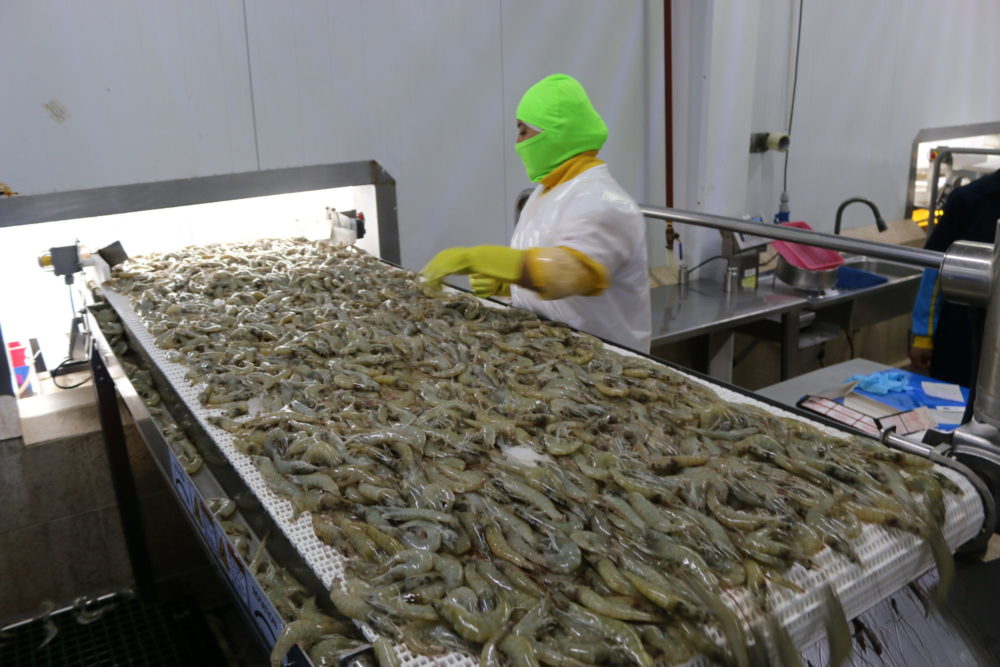
“For a shrimp [weighing] between 18 and 20 grammes they were paying US$1.88 and it went down to $1.83. The packers [Ecuadorean companies that buy the shrimp from farms] say it is because of the problem with China,” Tello says.
There is a lot of crime, shrimp that have been robbed and that then goes to certain unscrupulous exporters
In Southern Ecuador’s El Oro province, crustacean producers say the price dip is even more drastic but don’t think the China ban is wholly responsible.
“The drop in the price of the kilo is now $0.40 for producers here and we know that not all shrimp is going to China. We are talking about Italy, France and the US. That’s our concern,” says Segundo Calderón, president of the Chamber of Shrimp Producers of El Oro.
“Why do they lower prices for the producer saying it’s China’s problem? It’s illegal!”
Calderón, who represents 1,200 shrimp producers responsible for 35% of exports, laments that his colleagues are affected when, he says, the pools in which they breed shrimp on coastal land comply with sanitary controls.
“We pass many filters. First the visual control that we do in the course of shrimp farming, then when we negotiate with the processing plants they send us a sheet to say where the larva is from and what food is used,” he says.
“When they buy shrimp, they buy quality shrimp.”
Official response
Information on official channels refers to several meetings held in China in September between Chinese customs authorities and an Ecuadorean delegation headed by Minister Ontaneda.
“As a result of dialogue with Chinese authorities, the yellow head sanction was lifted for the Omarsa Group [of producers] …We continue in technical meetings to establish the best road map and lift restrictions on other companies,” Ontaneda tweeted on September 16.
Likewise, China has allowed the entry of cooked or peeled shrimp meat from blacklisted companies, though few export much of this to China.
Chinese authorities issued a health alert in August, alleging that shrimp was contaminated with yellow head virus (YHV), which affects the animal’s vital organs, and white spot (white spot syndrome virus or WSSV), which affects their appetite and motor functions.
1998
the last time white spot syndrome virus was detected in Ecuador
WSSV devastated the Ecuadorean shrimp sector in 1998, but was overcome by adopting optimal cultivation processes. The country has never had problems with YHV until now.
The reversal of the blockade, spearheaded by Omarsa Group, one of the main exporters, was agreed after analysing a container of shrimp that was returned to Ecuador. Samples ruled out the presence of yellow head, according to the National Chamber of Aquaculture (CNA). However, the organisation warned that future cases would be punished.
“Those companies that find diseases will be sanctioned, that is, the temporary suspension and return of the product. It is at the exporters own risk to send their product,” a CNA statement read.
In larval laboratories where the animal is bred at an early age, there is also concern as scientists have observed worrying symptoms since the commercial impasse with China.
In the last two to three years we have become too dependent on the Chinese market
It should not be the sole responsibility of companies to resolve the crisis, according to Luis Alvarado Gaumán, president of the Association of Shrimp Producing Laboratories of Santa Elena Peninsula, on the westernmost point of Ecuador’s mainland.
While the environment ministry and laboratories regulated by the National Fisheries Institute (INP) comply with sanitary processes to ensure the production of healthy larvae, there are still questions over gaps in their oversight, Alvarado says.
“There is a lack of traceability controls that the government must carry out. There is a lot of crime, shrimp that have been robbed and that then goes to certain unscrupulous exporters.”
Alvarado adds that all there should be control at all shipping tolls since there are laboratories and shrimp farms that work without permits.
The unexpected growth of the Chinese market brought significant revenues but forced shrimp producers to face up to their over-reliance on one buyer and the safety consequences of such an explosive boom, according to Tello.
“In the last two to three years we have become too dependent on the Chinese market. Other markets like Europe, the US and Southern Cone countries have been neglected.”
Diálogo Chino requested interviews with Iván Ontaneda, Ecuador’s minister of production, and the National Chamber of Aquaculture (CNA) to learn about the measures the country is taking to overturn the ban on certain companies. Neither responded.

